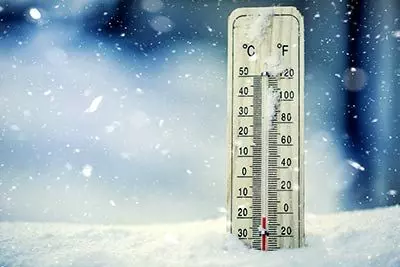-

Moving to a new home can be an exciting yet daunting task. Whether you are a buyer or seller, there are several tips that can help ensure a smooth and hassle-free move. In this blog, we will provide you with some valuable insights on how to organize your belongings, the supplies you will need, and important factors to consider during the moving process. Organizing your stuff is a crucial step towards a successful move. Begin by decluttering your home and getting rid of any unnecessary items. This will not only help you reduce the number of things you need to pack, but it will also save you time and effort during the moving process. Start by sorting your belongings into different categories such as keep, donate, sell, or throw away. This will help you make more informed decisions about what to take with you to your new home. Once you have organized your belongings, it is important to stock up on the necessary supplies for the move. Some essential items include sturdy moving boxes, bubble wrap, packing tape, markers, and labels. It is also advisable to invest in quality packing materials to protect fragile items such as glassware, electronics, and valuable possessions. Being prepared with the right supplies will ensure that your belongings are safely transported to your new home without any damage. In addition to organizing and gathering the necessary supplies, there are a few important factors to consider when moving. First, it is advisable to plan your move well in advance. This will give you ample time to make necessary arrangements, such as booking a moving company or renting a moving truck. Rushing through the process can lead to unnecessary stress and potential complications. Another crucial aspect to consider is informing relevant parties about your change of address. This includes notifying your utility providers, banks, insurance companies, and any other institutions that send you important mail. By doing this ahead of time, you can ensure that your essential services are not interrupted, and you won't miss out on any important documents. Furthermore, it is important to create a detailed inventory of your belongings before the move. This will help you keep track of your items and ensure that everything arrives safely at your new home. Labeling your boxes with the corresponding room or category will also make the unpacking process much easier and more efficient. Lastly, it is important to note that the process of moving can take longer than anticipated. Therefore, it is essential to plan accordingly and allocate enough time for the move. This will help reduce stress and ensure that everything is properly organized and completed before your move-in date. In conclusion, a smooth move requires careful organization, gathering the necessary supplies, and considering important factors such as planning ahead, informing relevant parties, creating an inventory, and allocating enough time. By following these tips, buyers and sellers can ensure a seamless transition to their new home. Happy moving!
Read More -

As pet owners, we know how important it is to create a safe and welcoming environment for our furry friends. Our pets are not just animals, they are members of our family, and ensuring their safety within our homes is crucial. In this blog post, we will explore some practical tips and strategies on how to "pet-proof" your home, making it a safe haven for your four-legged companions. One of the first steps in pet-proofing your home is to identify potential hazards. Many common household items can pose a threat to our pets, such as cleaning products, certain plants, and even some foods. Cleaning supplies, for example, should be securely stored in cabinets or high shelves to prevent any accidental ingestion by curious pets. Similarly, some plants, like lilies and aloe vera, can be toxic to dogs and cats, so it's important to research pet-friendly alternatives and keep potentially harmful plants out of their reach. Additionally, many foods that we enjoy can be harmful to our pets, including chocolate, onions, and grapes. Therefore, it is vital to be mindful of what you leave within their reach and to keep these items safely stored away. Beyond identifying potential hazards, there are several measures you can take to make your home pet safe. Start with securing any loose cords or wires, as chewing on these can lead to electrical shock or other injuries. Using cord protectors or hiding cords behind furniture can help prevent this. Additionally, consider installing baby gates to restrict access to certain areas of the home, such as the kitchen or stairs, especially when you're not able to supervise them closely. This allows your pets to roam freely within designated areas without exposing them to potential hazards. Another important aspect of pet-proofing is ensuring your home is escape-proof. Make sure all fences are secure, gates are locked, and windows are properly screened to prevent your pets from getting loose or injured. Consider microchipping your pet as an added precaution in case they do manage to escape. This tiny chip can be scanned by a veterinarian or animal shelter, providing you with peace of mind knowing that your pet can be easily identified and returned to you. In conclusion, pet-proofing] your home is an essential part of responsible pet ownership. By identifying potential hazards, securing loose items, and creating escape-proof environments, we can provide our pets with a safe and secure space to thrive. Remember, our pets rely on us to keep them safe, and by taking these proactive measures, we can ensure a happy and healthy lifestyle for both them and us.
Read More How to Prepare for Winter Weather

As the winter season approaches, it's important for homeowners to prepare for the potential challenges that come with colder temperatures and severe weather conditions. By taking the necessary precautions, you can ensure that you and your home are ready to face whatever winter has in store. Here are some tips on how to prepare for winter weather and what to do if the electricity goes out. Lifestyle: Winter weather often brings about a lifestyle change. Days become shorter, and outdoor activities may need to be adjusted accordingly. Embrace the cozy atmosphere that winter brings by creating a warm and inviting space inside your home. Invest in soft blankets, scented candles, and warm lighting to make your living areas feel welcoming and comfortable during the colder months. Home: Before the first snowfall, take the time to prepare your home for winter. Start by inspecting your windows and doors for any drafts or leaks. Adding weatherstripping or caulk can help seal any gaps and reduce heat loss. It's also vital to check your insulation levels and consider adding more insulation if necessary. This will help keep your home warm and energy-efficient throughout the winter season. Winter Weather: In regions where winter weather can be severe, it's important to have a plan in place. Keep an emergency kit that includes essentials such as flashlights, batteries, a battery-powered radio, non-perishable food, and extra blankets. In case of a power outage, it's crucial to have alternative heating sources like a fireplace or a generator, provided they are used safely and according to the manufacturer's instructions. What to Do if the Electric Goes Out: If you find yourself without electricity during a winter storm, there are a few steps you can take to keep yourself safe and comfortable. First, report the outage to your local utility company and follow their instructions. Keep your refrigerator and freezer doors closed to preserve food for as long as possible. Use alternative heat sources cautiously and ensure proper ventilation to prevent carbon monoxide poisoning. Finally, stay informed about the situation by listening to your battery-powered radio or accessing local news updates on your smartphone. Preparing for winter weather involves taking proactive steps to protect your home and ensure your safety. With the necessary supplies on hand and being prepared for potential power outages, you can face the winter months with confidence. Stay warm, stay safe, and make the most of the cozy indoor lifestyle that winter weather encourages.
Read More
Categories
Recent Posts










